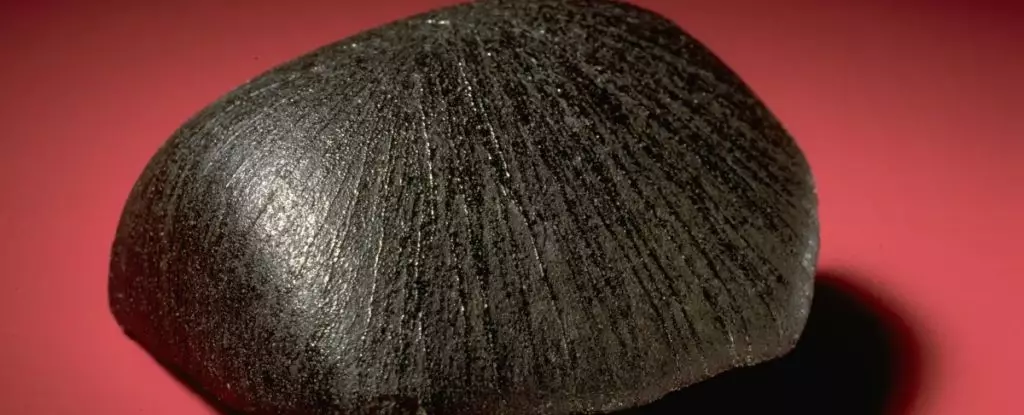Mars, the fourth planet from the Sun, has long captivated scientists and enthusiasts alike with its enigmatic characteristics. The growing evidence of its once-hydrated past suggests that ancient Mars was not the barren desert we see today, but rather a planet adorned with lakes and perhaps even oceans. Recent studies, particularly surrounding the Lafayette Meteorite, have shed light on the existence of liquid water on Mars much more recently than previously thought. This discovery not only enriches our understanding of Martian history but also opens up avenues to explore similar phenomena across the solar system.
For years, the scientific community believed that the era of abundant water on Mars had long passed, relegating the planet to a history of desiccation. However, the analysis of the Lafayette Meteorite, which journeyed from Mars to Earth approximately 11 million years ago, has introduced new evidence suggesting that liquid water may have existed on the Martian surface as recently as 742 million years ago. This is a significant revelation that challenges existing paradigms regarding the timeline for aqueous activity on Mars.
Lead geochemist Marissa Tremblay from Purdue University emphasizes the importance of dating the minerals found within the meteorite. The minerals of interest, particularly iddingsite, a product of volcanic basalt that necessitates the presence of liquid water for its formation, indicate that some geological processes on Mars were still influenced by water millions of years ago. The discovery that water could be sourced from subsurface ice, melted through volcanic activity, adds a complex layer to our understanding of Mars’s climatic and geological evolution.
The scientific method employed to date the minerals inside the Lafayette Meteorite utilizes advanced techniques in radiometric dating, specifically focusing on the isotopes of argon. Argon-40, a stable isotope, is produced through the radioactive decay of potassium, which is absent in the icy inclusions of the meteorite. However, scientists can infer the initial amounts of potassium by studying the correlated isotopes of argon-39 — providing a robust estimation of time since the rock initially interacted with water.
This meticulous analytical process is not without its complications. As Tremblay indicates, the meteorite’s long journey through the cosmos — influenced by exposure to temperatures during various stages including ejection from Mars, transit through space, and atmospheric entry on Earth — could potentially alter the isotopic readings. Nevertheless, detailed modeling allowed researchers to account for these variables, yielding a reliable estimate of the age of fluid interaction within the meteorite.
The implications of these findings extend far beyond Martian shores. By establishing a definitive timeline for liquid water’s presence on Mars, scientists can better understand periods of volcanic activity and their role in altering the planet’s surface and atmosphere. Insights gathered from the Lafayette Meteorite can help answer pivotal questions about volcanic resilience and the conditions necessary for water retention on Martian soil.
Furthermore, exploring the geological history of Mars can deepen our comprehension of broader planetary processes, including the origins of water on Earth itself. As researchers continue to fine-tune dating techniques applicable to various meteorites, the potential for comparative planetary studies becomes increasingly tangible. Insights generated from Martian meteorites could illuminate similar processes on other celestial bodies, assisting in solving the longstanding questions surrounding the evolution of our solar system.
As curiosity about Mars burgeons with new missions and technology, the analysis of extraterrestrial materials like the Lafayette Meteorite serves as both a window into the past and a guide for future exploration. By utilizing advanced isotopic dating methods, scientists will forge pathways to uncovering the hidden histories of not only Mars but other planets like Venus, Europa, and beyond.
The study of Mars’s liquid past underscores the dynamic nature of planetary environments, reminding us that the cosmos is far from static. While Mars today may seem inhospitable, the insights gleaned from its ancient watery history underscore a time of potential life-sustaining environments. As research progresses, the quest to understand our neighboring planets continues, fueling the age-old dream of uncovering life beyond Earth. Through the investigation of meteorites and the development of innovative analytical techniques, the echoes of Mars’s wet past may serve as a beacon for future discoveries in the quest for extraterrestrial life.


Leave a Reply